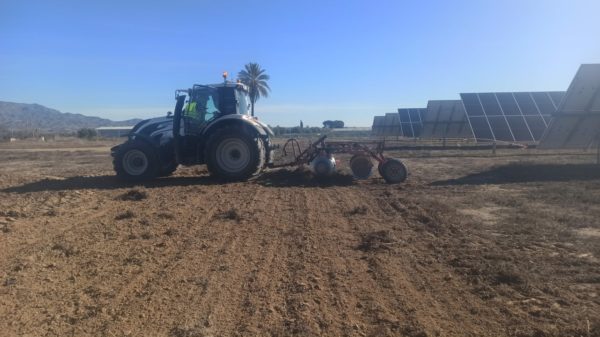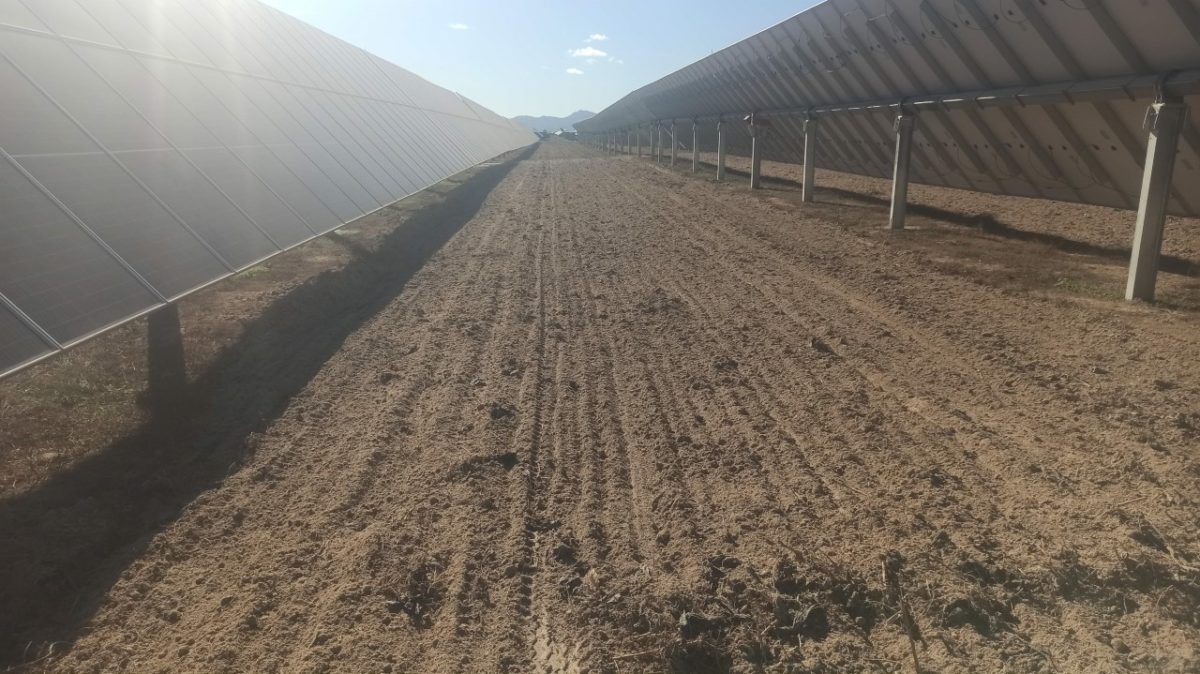Enel Green Power, the renewable energy unit of multinational energy group Enel, has launched a series of agrivoltaic pilot projects at nine demonstration sites in Europe, including two in Greece, five in Spain, and two in Italy.
“Our initial approach to agrivoltaics is based on the idea of utilizing existing and operational solar parks,” Giovanni Tula, Enel Green Power's head of sustainability, told pv magazine. “We are trying to understand if different kinds of agricultural activities can be integrated in an efficient way into plants that have been active in the power generation business for several years.”
Its approach is designed to utilize agricultural surfaces that have already been used for the construction of large-scale solar plants, so there is no need to occupy new plots of land.

According to Tula, there is plenty of room for crops between the trackers and the panels. “A conventional solar park does not change the nature of the ground and agriculture is still possible,” he said. “Our goal is to explore the agrivoltaic option in large-scale PV parks or sites in which the energy business remains the most important one.”
This business model, according to Tula, would be completely different from more “conventional” agrivoltaic projects, where the agricultural business dominates and the panels are usually mounted on special structures at a certain height to enable the use of farm equipment beneath them.
“We are planning to develop a concept that doesn't affect the existing power generation without altering the plant design and, at the same time, which enables a profitable crop business,” Tula explained. “We are not simply adding some agricultural activity on the edge of a plant to make it appear greener.”
The company will manage the demonstration projects in an analytical manner with scientific partners.
“The first answers for our approach should come within 24 months and the collected data should come from test-cultivating an overall surface of nearly 30 hectares scattered across the nine PV facilities, 2 or 3 hectares each,” Tula said, adding that the extent of the new agricultural activity still needs to be evaluated. “It may be around one-third of the plant’s surface. But the right proportion between the crop cultivation and the power generation business will depend on the specific characteristics of each project.”‘
The model can also be adopted in solar plants that already benefit from feed-in tariffs or incentives of different kinds. This could make the integration of agriculture an additional, rather than negligible source of revenue for the plant owners.
Once it is validated by research, the proposed approach should be applied to existing PV plants and new projects.
“We do not expect major design modifications of new projects, except some fine tuning in their layout in order to optimize the integration of the agricultural solution into the PV plant,” Tula said. “Tests on existing plants have been launched with the aim to assess the optimal conditions to scale-up crop cultivation activities, without altering PV design nor plant profitability.”
The company will test several kinds of crops at the pilot projects.
“We will test crops that do not grow too much and we will also see how these crops can alter the albedo in bifacial plants,” Tula said. “We want to plant herbs, flowers, or plants that can act as catalysts for biodiversity, but we also want to test courgettes, broccoli, aubergines, asparagus, legumes, and even animal fodder.”
Enel Green Power also might test certain forms of livestock farming at the solar parks.
“We are thinking, for example, of breeding rabbits of a certain type in central Italy in the province of Viterbo,” Tula explained.
Agricultural alternatives
Tula said agrivoltaics will probably not be developed on a big scale in the years to come.
“But I am also sure it will come sooner than expected,” he said. “I think it is important, however, that we try to define what agrivoltaics could be in the future and, as for now, we are trying to help understand how the agribusiness may find an interesting niche in existing solar parks.”
Tula said a big growth driver for agrivoltaics might come from the agricultural sector itself, as it may decide to opt for PV surfaces for certain kinds of crops.
“We may see PV specializing in some specific agricultural products, excluding of course all kinds of plants with a high stem,” Tula concluded.
This content is protected by copyright and may not be reused. If you want to cooperate with us and would like to reuse some of our content, please contact: editors@pv-magazine.com.




Wildflowers? This is good, but it isn’t agriculture. I suggest we need a better terminology. The general term could be *biovoltaics*, encompassing all methods of combining life with solar energy. Agrivoltaics is the sub-category of crop and livestock production. Other non-agricultural co benefits are wildlife and bees. Biovoltaic value should be compulsory: no lifeless car parks, But how the developer achieves it should be up to them.
With great difficulty all are accepting AgriVoltaics as a “standard” Decription after almost a decade (actually more as far as “first of a kind” projects are concerned)… bio… natur….green…this-n-that … etc… just causes further confusion… (No… I did not create it… but “jumped on tbe wagon” msny years back…. and donot have to explain it much anymore) … I say lets stick with AgriVoltaics…
Unfortunately, ENEL (is this not the Electric Utility jn Italy…???… as I had worked on a Nuclear Study several Decades back) must recognize that AV is a marriage between Solar Power AND Agriculture…. not Electrical or other Engineers “playing around” with Agriculture… If ENEL is serious about AV…. do get Agriculturalists on Board…. asap…. don’t fool around with “trial and error”… remember they feed 7Billion plus people every day of every year and was the first activity when Man “Civilized”…. many milleniums ago… so use THEIR EXPERTISE and ley Engineers do what they do best…. construct Electrc Facilities for ENEL ….
exactly sir, agriculture is not work for excel there are more the 20 factor for a single plant only biological then its come legal, business and skills.
Depending on insolation and crop, plant can be more productive with some shading. If they get too much sun they shut down photosynthetis. In Japan they have found that 35% shading with PVs is good. They are mounted high enough to allow all the ground underneath to be used.
There are many regions of the world where such shading would be beneficial to cropping.